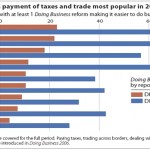What the Wayfair Decision Means for American E-commerce

E-commerce is one of the longest-standing, foundational business models in the ever-growing digital landscape. It’s hard to imagine, for instance, that Amazon—a once tiny seller of books—is now 24 years old and has made its founder, Jeff Bezos, one of the wealthiest humans in the world.
Another story to consider is Zappos, which began of out of a simple vision to sell shoes online. Now, Zappos is known for having one of the largest and most diverse footwear inventories—and there are more than 1,500 people who work on the company every single day. Given the company’s business model, it’s no surprise that Amazon acquired Zappos forr $1.2B in 2009.
Given the successes of these early players, you may think that the e-commerce ecosystem has matured. The short answer—not so much. Believe it or not, the world of online retail is still its infancy, with many opportunities for companies to enter the market with unique digital storefronts.
According to research from Internet Retailer, Amazon accounts for only 40% of U.S. online retail. That means that the remaining 60% of market share is up for grabs. That market share is also growing, with e-commerce representing only 14.3% of total retail sales in 2018. According to the U.S. Department of Commerce, that metric is up 14.2% since 2017. The bottom line? More people are buying goods online in the United States—and elsewhere in the world.
There are major opportunities to enter and expand within this landscape. But paths forward are not always straightforward. One of the biggest challenges that stand in the way is legislation.
Why Change the Regulatory Landscape?
Think about how business has evolved over the last 15 years alone. Back in the early 2000s, could you have imagined that consumers would own multiple devices and be making purchases from their tablets and phones? The answer is likely no, given that Apple first introduced its first-generation iPhone in 2007.
Technology is changing how humans engage and transact with one another, at a record pace. The World Economic Forum calls this macroeconomics trend the Fourth Industrial Revolution—one of the most profound and fastest shifts that has taken place in human history:
“We stand on the brink of a technological revolution that will fundamentally alter the way we live, work, and relate to one another. In its scale, scope, and complexity, the transformation will be unlike anything humankind has experienced before. We do not yet know just how it will unfold, but one thing is clear: the response to it must be integrated and comprehensive, involving all stakeholders of the global polity, from the public and private sectors to academia and civil society.” – Klaus Schwab, Founder and Executive Chairman, World Economic Forum
Within this landscape, it’s tough for policy to keep up. Business owners, especially those who operate online storefronts, need to be ahead of changes that they sometimes cannot anticipate. Ambiguity is the norm of doing business on the internet, and changes are going to accelerate as governments around the world encounter new questions.

What the Wayfair Decision Means
Many changes to tax policies in the United States—and elsewhere—arise due to lawsuits that make their way through state and federal court systems. The ramifications of these policy changes are sometimes unknown and can take years to come into effect.
One of the biggest gray areas that policymakers, legal experts, and e-commerce storefronts are navigating is the Wayfair Decision. This Supreme Court ruling, passed on June 21, 2018, “requires any out-of-state seller that delivers more than $100,000 of goods or services or has 200 or more transactions in South Dakota, on an annual basis, to collect sales tax from purchasers located in the state,” according to an analysis from the QuickBooks research team.
Businesses that meet this criteria will need to build processes to make sure that they are in compliance. That means staying on top of changing regulations. This is a tough balancing act—keeping an eye out into the future while staying on top of immediate-term needs. How do you run your business and stay on top of regulations in 50 American states?
The QuickBooks team conducted a study of 600 American small business owners. Here’s what the research uncovered:
- As many as 1 in 5 are “very concerned” about the decision.
- Only 7 in 10 small business owners had known about the Wayfair ruling, leaving 29% clueless to the changes that will likely affect their business.
- The study further revealed that 1 in 10 feel that managing sales tax for their business is not at all clear (9.3%), and a whopping 2 in 5 feel that it’s only somewhat clear (43.5%).
- Additionally, when asked how confident they were with their business’s sales tax calculations, 1 in 10 small business owners reported that they are not at all confident (8.2%), and only 1 in 2 considered themselves very confident (55.83%).
- At the end of the day, it’s clear that business owners consider sales tax be much more complex than they would like, with 1 in 2 feeling that collecting sales tax is either only somewhat simple, or not simple at all (56.2%).
The biggest challenge that business owners face is that it’s impossible to predict what the outcome of the Wayfair decision will be—and how states will respond. It takes time for Supreme Court precedents to trickle down.
Ultimately, the Wayfair Decision will have some impact to companies’ bottom lines, but it’s impossible to know, at this stage, how to prepare. So what steps should businesses take?
Prepare for Uncertainty
As a small business owner, you never want to be in a position in which you’re scrambling to pay taxes that you didn’t know. In online retail, especially, taxes can add up and hurt your margins. There are calculated steps that businesses can take to get ahead of the Wayfair Decision—and to avoid unexpected penalties and hurdles.
- Run an analysis of your customer base, to gain an understanding of where they reside. If you notice a concentration of customers in a few states, you’ll want to pay close attention to legal and procedural changes taking place.
- Enlist the help of a lawyer, CPA, and accountant that can help you build processes for monitoring changes. If you work with a consultant such as a lawyer, check in every quarter, and ask for updates on pending legislation.
- Use software with in-house tax experts to automate your accounting processes. When you automate accounting processes, you’ll prevent the potential for details to fall through the cracks.
According to the QuickBooks Resource Hub, Intuit’s in-house sales tax experts are closely monitoring all cases and legislation, along with the Intuit Tax Policy team. The company will be continually educating customers to assist them in determining in which states they are required to collect sales tax.
The company is also making investments into its product by automating tax calculations. One resource that may be helpful is this sales tax calculator.
Final Thoughts
As the e-commerce world continues to grow, prepare to expect more change to take place. Policies are catching up to consumer demands and technological evolution. The right partners, strategic advisors, and technologies can help you forge your best path forward—especially when you’re navigating conditions of extreme uncertainty.
About the author: Ritika Puri is a San Francisco-based entrepreneur who builds educational content for businesses. She’s worked with entities of all types including startups, governments, and Fortune 500 organizations, all over the world.
She and her co-founder have built an international team across the United States and Europe and have pioneered methods that help audiences learn and connect with storytelling. One of Ritika’s customers is Intuit, which enables her to write about finance and growth.
She believes this topic is important for small business ecosystem and is grateful to the QuickBooks team for enabling her to create educational resources, for fellow entrepreneurs, for a living. You can see her work on the QuickBooks Resource Center and learn about her company at Storyhackers.com.
Image sources:

Tags: Online Presence - eCommerce performance, Small and Medium Sized Enterprise, Taxes






